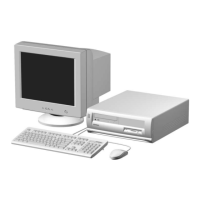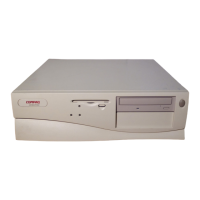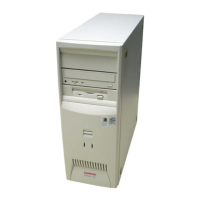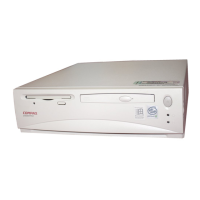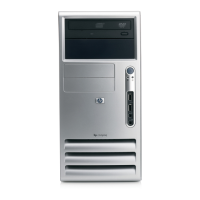Chapter 3 Processor/Memory Subsystem
Compaq Deskpro 4000 and 6000 Personal Computers
featuring the Pentium II Processor
First Edition - October 1997
3-4
3.2.1.1 MMX Technology
The CPU of the Pentium II supports 57 additional instructions for accelerating multimedia and
communications applications. Such applications often involve compute-intensive loops that,
while taking up only a small percent of the application code, can take up as much as 90 percent
of CPU execution time. The MMX logic, using a parallel processing technique called Single
Instruction-Multiple Data (SIMD), processes 64 bits of data at a time.
The MMX instructions are designed to take advantage of the dual-pipeline CPU as well as help
the programmer in avoiding branches in code. Types of operations where performance is
enhanced include video playback, 3D imaging, and file printing. Specific applications that
benefit from MMX technology include 2D/3D graphics, audio, speech recognition, video codecs,
and data compression .
The MMX technology is compatible with current operating systems, although future operating
systems, like the application software, may become customized to take advantage of MMX
benefits.
NOTE:
MMX operations utilize a portion of the floating point registers of the
integrated math coprocessor. Programmers should avoid the mixing of MMX and
floating point code, which would reduce performance.
3.2.1.2 PROCESSOR CHANGING/UPGRADING
The Pentium II SEC cartridge design allows for easy changing and/or upgrading of the
microprocessor/cache complex. In changing the SEC cartridge, two key areas should be
considered: thermal characteristics and operating speed.
Thermal Considerations
The factory-installed SEC cartridge includes a passive heat sink attached with clips. Forced
cooling of the processor by a secondary fan (located in the front of the unit and connected to
header E100) is used only in minitower models. A thermister, located on the heat sink and
connected to system board header P15 detects when the processor has reached the caution
temperature level. The processor also has an internal sensor that will shut down the
microprocessor if the temperature reaches 135°C.
The system board includes a header (E101) that allows the connection of a cooling fan that may
be integrated onto some upgrade SEC cartridges, depending on source.
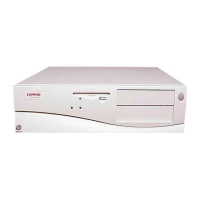
